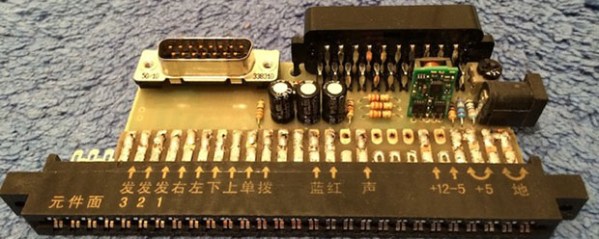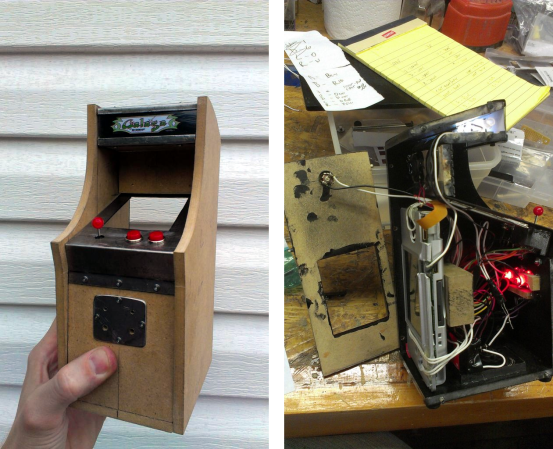Who can resist video games when they’re packed up in tiny, tiny little arcade machines? [Ken]’s hoping that you cannot, because he’s making a cute, miniature Arduino-based arcade game platform on Kickstarter. (Obligatory Kickstarter promo video below the break.)
The arcades are based on [Ken]’s TinyCircuits Arduino platform — a surprisingly broad range of Arduino modules that click together using small snap connectors in place of pin headers. The system is cool enough in its own right, and it appears to be entirely open source. Housing these bits in a cute arcade box and providing working game code to go along with it invites hacking.
There’s something about tiny video cabinets. We’ve seen people cram a Game Boy Advance into a tiny arcade cabinet and re-house commercial video game keyfobs into arcade boxes. Of course, there’s the Rasbperry Pi. From [Sprite_TM]’s cute little MAME cabinet to this exquisite build with commercially 3D-printed parts, it’s a tremendously appealing project.
But now, if you’re too lazy to build your own from scratch, and you’ve got $60 burning a hole in your pocket, you can get your own tiny arcade — and tiny Arduino kit — for mere money. A lot of people have already gone that route as they passed the $25k funding goal early yesterday. Congrats [Ken]!

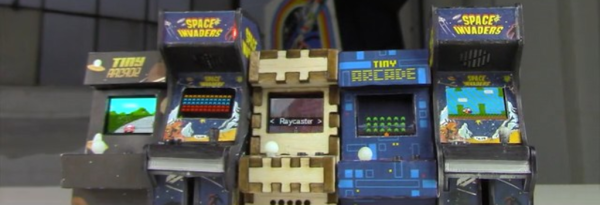
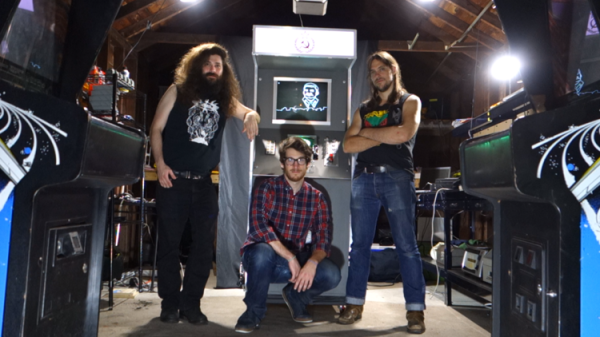
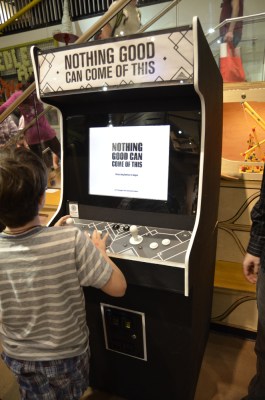 Video arcades may be a thing of the past, but they’re still alive, well and were ready to play at this year’s World Maker Faire. The offerings weren’t old favorites, all were brand new games many being shown for the first time like the long-awaited VEC9. The Hall of Science building was filled with cabinets and no quarters were necessary, all were free-play.
Video arcades may be a thing of the past, but they’re still alive, well and were ready to play at this year’s World Maker Faire. The offerings weren’t old favorites, all were brand new games many being shown for the first time like the long-awaited VEC9. The Hall of Science building was filled with cabinets and no quarters were necessary, all were free-play.
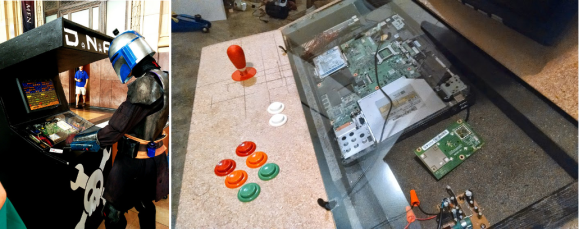 We’re pretty fond of home-built arcade cabinets, especially when those cabinets feature a giant HaD logo on the front. We teased you with a picture of two predators playing it at Maker Faire Kansas City, and we thought you might like to
We’re pretty fond of home-built arcade cabinets, especially when those cabinets feature a giant HaD logo on the front. We teased you with a picture of two predators playing it at Maker Faire Kansas City, and we thought you might like to  The bragging rights of owning a vintage arcade machine are awesome, but the practicality of it – restoring what is likely a very abused machine, and the sheer physical space one requires – doesn’t appeal to a lot of people. [Jason] has a much better solution to anyone who wants a vintage arcade machine, but doesn’t want the buyer’s remorse that comes with the phrase, “now where do we put it?”
The bragging rights of owning a vintage arcade machine are awesome, but the practicality of it – restoring what is likely a very abused machine, and the sheer physical space one requires – doesn’t appeal to a lot of people. [Jason] has a much better solution to anyone who wants a vintage arcade machine, but doesn’t want the buyer’s remorse that comes with the phrase, “now where do we put it?” 